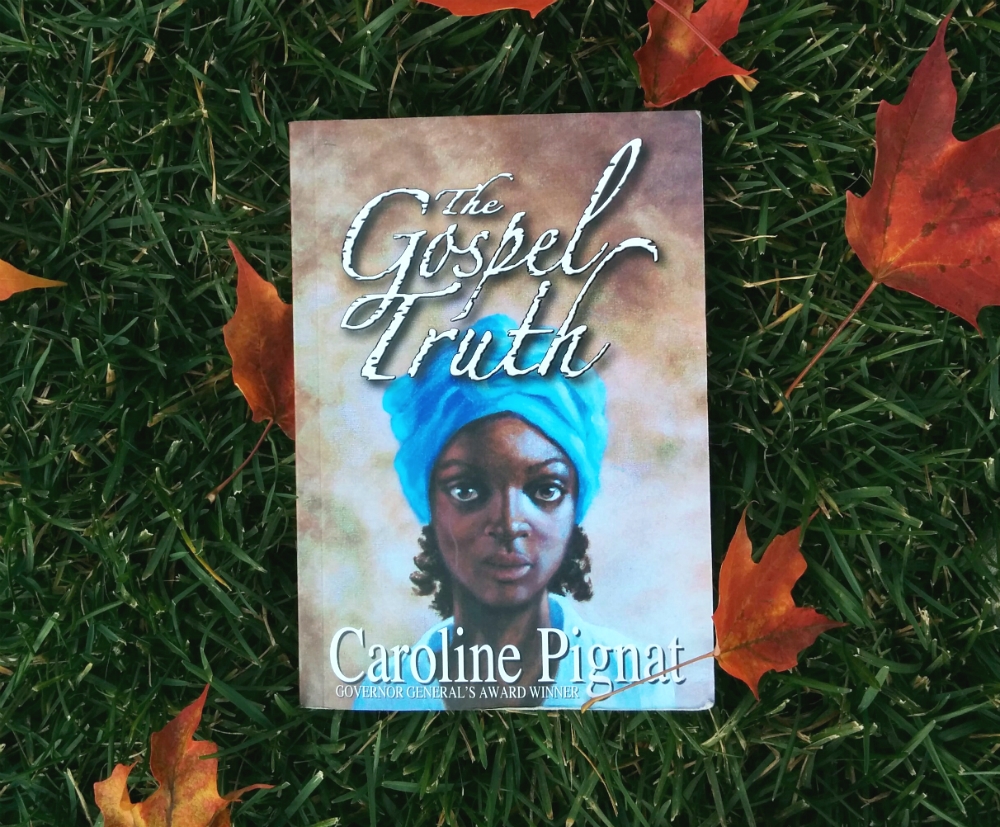
Book Review: The Gospel Truth
In the opening chapter of Caroline Pignat’s latest Governor General’s Award Winner, The Gospel Truth, 16 year-old Phoebe steals a half-dead yellow bird from the jaws of her plantation’s predatory cat, Rufus. Phoebe locks the bird up, and although she feels bad for containing a creature that was meant to fly, she looks down at the cat and thinks “sometimes the safest place to be is in a cage.”
A bird in a cage surrounded by prowling cats is about as good a metaphor for the institution of slavery as you’ll find, but as Phoebe quickly discovers, that cage contains monsters of its own.
In the book’s opening chapters, Phoebe, a house-slave who carries a deep connection with birds, holds a relatively safe position at the aptly named Whitehaven Plantation. Things become more complicated when a wealthy white birdwatcher visits the tobacco farm. The plantation master hopes to set his daughter up with this Dr. Bergman, but Phoebe quickly realizes that the doctor has his eyes on her.
As you can imagine, The Gospel Truth builds and maintains an incredible amount of tension. The book presents slave life from multiple perspectives, but each enslaved character goes about their days like they’re walking on broken glass and one slip can lead to a grievous injury. This really captures the danger that followed slaves every moment of their lives and by the book’s halfway point the suspense is huge. You know there’s going to be a disaster, you just don’t know where it’s coming from.
Pignat’s writing reads like poetry, and a dedicated reader could easily breeze through the entire book of dramatic free verse in a weekend. Each character has their own distinct voice, but each voice is immensely readable. To capture the slaves’ voices, Pignat researched their unique colloquialisms in the Library of Congress’s massive collection of recorded interviews with former slaves.
One of Pignat’s great successes in The Gospel Truth is using her many characters to show all the different ways a slave can view life in bondage. Phoebe is resigned to it, because as the cage metaphor suggests, she sees the world outside Whitehaven’s fences as more dangerous than the one inside. Her best friend, a boy named Shad, believes that if he does everything right the master’s rewards will make up for his lack of freedom. After all, how can you miss something you’ve never tasted? Finally there’s Shad’s brother Will, who is hell-bent on escaping Whitehaven even if that means his death.
The Gospel Truth is a perfect book for young adults who want to approach the history of American slavery more critically. I won’t recommend it over actual slaves’ narratives, but if you have a reader who is too young to appreciate Frederick Douglass or too squeamish for Harriet Jacobs, you won’t find a better introduction to the subject than Caroline Pignat’s.
Pignat lives and writes in Ottawa. The Gospel Truth is her second Governor General’s Literary Award winner and is also a finalist for the Ottawa Book Award.









